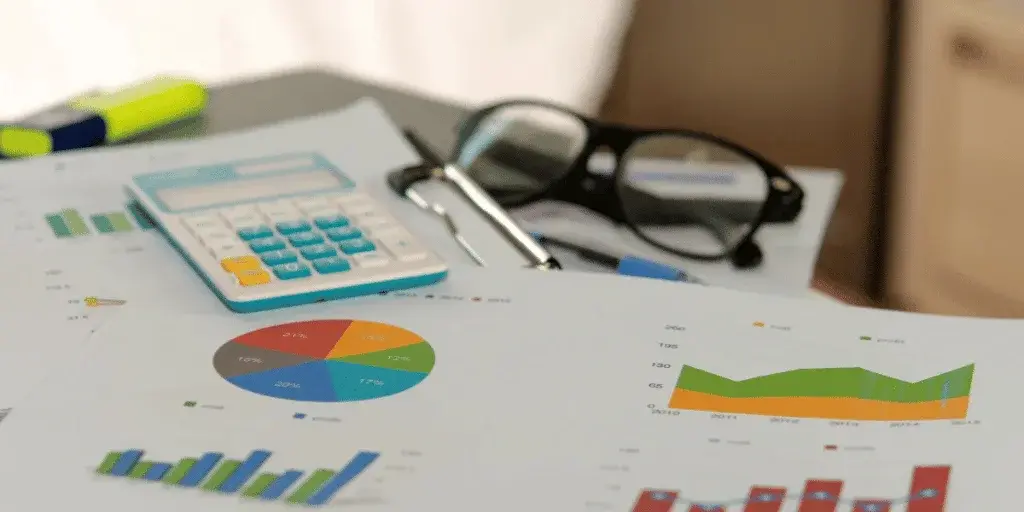What the Numbers Don’t Show: The Hidden Forces Driving Personnel Budgets
Based on insights from our Martus Personnel Budgeting webinar, this article examines the hidden costs that influence nonprofit staffing decisions....

For years, budgeting usually followed a standard pattern: review last year’s budget, compare that to performance, look at projections, and adjust accordingly. However, things have changed in the past few years. Budgeting in this new economy requires flexibility and “staying on your feet” at all times, so it can be really helpful to use an adaptive, simple, and Cloud-based budgeting system for your organization.
Martus Solution simplifies budget forecasting by providing intuitive, cloud-based tools that let you say goodbye to spreadsheets and reduce errors.
Ready to forecast like a pro?
Book your personalized demo and see how our budgeting software can help you plan and manage your financial data.
Budget forecasting estimates and projects future financial outcomes based on market trends, historical data, and strategic goals.
The process involves:

Short answer—a sales forecast helps with smart budgeting by estimating revenues, which in turn impacts financial and operational planning.
Let’s look at some of the specific reasons why sales forecasting is essential for budgeting:

You can improve your company’s long-term success and financial stability with proper budget forecasting.
Here are the common benefits to watch out for:
Budget forecasts are a benchmark to measure your actual financial performance over time and evaluate the progress of your long-term goals. You can also compare actual results with long-term forecasts, you can review the shared economic goals, and promote accountability across departments.
Accurate budget forecasts allow your organization can identify potential financial hurdles, such as unexpected expenses. You can determine the impact of these risks on your financial performance and take proactive approaches to minimize the setbacks.
With well-planned budget forecasts, you can get detailed insights into which projects you should invest in, how to expand operations, and where to minimize costs. You can use the forecasts as a roadmap for the future and help determine and quantify the long-term goals and expected revenue.
Budget forecasting lets you estimate your revenues and expenses. You can anticipate the future resources you need in different departments. You can also align your financial planning with long-term projects and promote optimal resource utilization.

Depending on the size and industry, you can choose from the following methods of forecasting. Let’s walk you through 4 of the most common ones.
Rolling forecasts allow your company to revise budget projections on a monthly or quarterly basis. You can adapt and integrate new data into your forecast based on market conditions and changes in your business dynamics, ensuring accuracy in your forecasts.
Pros: They are very flexible, and your company can quickly respond to market shifts and internal changes
Cons: Requires frequent updates and requires accurate data to be effective
Once you’ve set the overall organization's financial targets and goals, create a budget for specific departments based on their responsibilities and past performance.
Pros: It’s data-driven, easy to implement, and great for businesses operating in stable market conditions
Cons: Doesn’t factor in changes in the market conditions and other external disruptions.
You can request budget proposals from your departments and consider their unique goals and objectives. Then, review and consolidate the proposals into a comprehensive overall budget.
Pros: Highly efficient and can identify areas to distribute the resources better
Cons: Complex to allocate and requires a lot of time to allocate costs to specific departments and activities.
Zero-based budgeting (ZBB) involves building your forecasts from scratch. You don’t have to base them on past financial data or assumptions. You justify and allocate each expense based on value and priorities. This approach allows you to optimize the costs and align your forecast with priorities.
Pros: Allows you to conduct detailed cost analysis and you can align your budget with priorities
Cons: It takes time and is complex, which can slow down the forecasting process.
Top Tip: If you want to streamline your budget forecasting, consider our software.
Our tool lets you centralize your financial data and estimate revenues, expenses, and net income. Besides, you can perform ‘what-if’ scenarios and analyze the impact on your budget forecasts.
Take a product tour today and confidently predict your financial future.

Let’s explore 5 tips for budgeting and forecasting in this new economy:
It sometimes feels silly to make long-term plans, especially with how the last few years have been. Though your organization’s plans may change, it’s still essential to create a budget and stick to your goals. Forecasting and creating “What-If” scenarios can really help you prepare for anything that could come your way and help you adjust accordingly. Make contingency plans, set aside a reserve, and prepare for as much as you can.
Communication is key; though you hear that all of the time, it really is crucial in flexible budget planning. No matter how your team likes to establish your budget, collaborating with both higher-ups and those with “boots on the ground” can allow you to create more real-time updates to your finances, which can shed a light on your budgeting goals. Collaborative budgeting is a great way to get everyone on the same page, and this can be especially easy when you use Cloud-based tools.
How does your cash flow compare to last month? Are expenses rising more than they should? Especially due to our current inflation rates, costs are rising across the board for materials, services, and more. Make sure to continually assess your cash flow and if it’s on track relative to your activities, as well as how your expenses are related to your revenue. After checking this out, you may need to update your budget swiftly or reassure your organization you’re on the right track for that period.

Especially if your organization relies on the teamwork of separate departments, you need to make sure everything is up to date. Just like Christmas lights, if one bulb is out, the entire string of lights might not work! Make sure all of the pieces are correct and timely so your budgeting team can make more accurate estimates. Your organization can also encourage each leader or department head to update their numbers and communicate how things are going to those who ultimately disperse or allocate funds.
Everything should come down to this: managing your finances and creating a budget that is best fit for your goals and mission. Whether that be planning for your employees to get a raise this year to match the rates of inflation, leaving room for more charitable donations, or setting aside funds to invest back into your business, your budgeting is essential to the success of your organization. If you use a budgeting tool that helps your organization budget faster and better, it can really help you thrive.
We have great news: Martus Budgeting and Reporting Software can aid your organization to do all five of those things in a simple, easy, and affordable way! Our software allows you to see the budget process as it’s happening and lets you “know the score” at any moment. While there are many benefits to our software, there are a few that are particularly helpful for budgeting in these uncertain times. Our budgeting software:
We created our Budgeting & Reporting Software to make budgeting much more streamlined for you, making it so your non-profit, school, church, business, or organization can operate how they need to. For more about Martus, learn about what we do here or contact us for a free demo today!

Got questions? Get answers to the most commonly asked questions about forecasting methods and techniques.
Check out a breakdown of the key differences between budgeting and forecasting:
| Budgeting | Forecasting |
|
|
|
|
|
|
|
|
Absolutely!
You can create a budget forecast from scratch for a new business or when launching a new product. You can use industry benchmarks, insights from financial advisors, or scenario planning.
Here are the common mistakes in forecasting:
The short answer—it depends.
Typically, a budget forecast is set annually. However, you might update your forecast monthly if your business is new or fast-paced, and annually if you're a large organization.
You can also review your forecast when your organization is facing unexpected events, such as changes in funding. Also, adjust your forecast when there is a vast difference between your projections and the actual figures.
A forecast helps you create a budget with realistic goals and gives you a clear view of your financial future.
Adopt the forecasting tips we’ve mentioned to help you make informed financial decisions and ensure long-term success. Also, pick a suitable budgeting tool to enhance the accuracy of your data.
If you’re looking for the best budgeting tool, Martus Solutions can help you create accurate forecasts and easily update projects in the cloud. Our software lets you collaborate seamlessly with your team and review the forecast in real time.
Book your demo today and start the journey to eliminate spreadsheet errors and create accurate forecasts.

Based on insights from our Martus Personnel Budgeting webinar, this article examines the hidden costs that influence nonprofit staffing decisions....

Outgrowing your older ERP system and looking to upgrade it?

Does your finance team spend countless hours each month updating budgets manually? Is it tedious, time-consuming, and prone to errors?